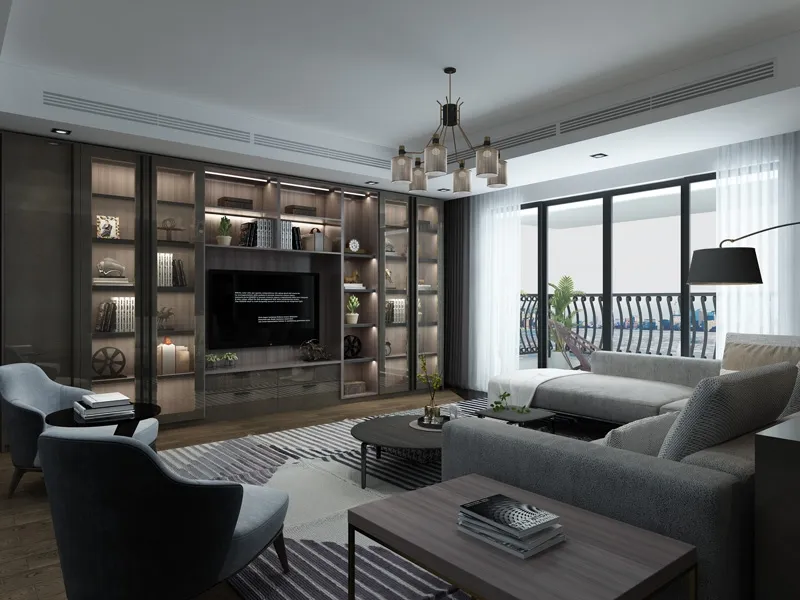
Use of Recyclable Packaging in TV Cabinet Shipping: Applications and Commitments

Remember when unboxing your new TV felt like wrestling with industrial-strength plastic and styrofoam? Those days are fading fast. Across the tech industry, a quiet revolution is transforming how products reach our homes – and it starts with what we throw away. Samsung’s journey with eco-packaging reveals how cardboard boxes aren’t just containers anymore; they’re the first chapter in your product’s lifecycle.
The "Aha!" Moment That Changed Everything
Daehee Yoon, one of Samsung’s lead designers, still remembers the spark that ignited this movement. "We’d see beautifully engineered TVs being unboxed," he shares, "and then watched those materials head straight to landfills. It felt... wasteful. Mustn’t there be a way to turn packaging into something useful, rather than just trash?"
This simple question became Samsung’s eco-packaging initiative – transforming TV boxes into pet houses, bookshelves, and coffee tables. What started as an experiment with The Frame and Serif TVs has now become a core philosophy. The secret? Treating packaging as the product.
Why Your Box Now Comes With Blueprints
Jonathan Whang’s design team faced a fascinating challenge: How do you help people see a cardboard box as raw material rather than rubbish? Their solution lives in two revolutionary features:
- The Dot Matrix: What looks like random dots is actually a DIY coordinate system. "Every fifth dot is larger," explains Yoon. "They become measurement points – helping you cut precisely without rulers or complex tools."
- QR-Coded Possibilities: Scan the code to unlock digital manuals for creating anything from side tables to cat condos. "We wanted zero paper waste," says Sungdo Son. "And digital means we can constantly add new designs based on what users create."
– Jonathan Whang
Beyond TVs: The Packaging Revolution Comes for Cabinets
What worked for televisions is now transforming larger items like TV cabinets. Here’s how shipping containers become room assets:
| Packaging Type | Traditional Approach | Eco-Packaging Solution |
|---|---|---|
| Wooden Crates | Single-use disposal | Disassembled into shelves or wall decor |
| Styrofoam Blocks | 10% recycled content | Cushions now 70% recycled and fully upcyclable |
Several brands now design cabinets with packaging that becomes drawer organizers or TV stand extensions. These innovations align with growing consumer demand – with EcoFocus Worldwide finding 68% of buyers choose brands with sustainable packaging.
The Ripple Effect: When Boxes Win Awards
Recognition matters. Samsung’s 2020 CES Innovation Award validated that environmental thinking drives commercial success. But the real win? Partnership initiatives like the Dezeen design competition, inviting creators worldwide to rethink packaging.
This creates a fascinating feedback loop: Consumers upload their upcycled creations Designers get inspired Brands incorporate innovations. Your next custom TV cabinet might literally ship with its own evolution built in.
Straight Talk: Challenges Still Ahead
Let’s be honest – not every sustainability effort is Instagram-worthy. Companies face real hurdles:
- Cost Balancing: Recycled materials currently cost 12-18% more
- Logistics Puzzle: Redesigning global supply chains
- Consumer Habits: Overcoming "just throw it out" mentality
But consider Whang’s perspective: "We’re not claiming one box changes the world. But every person who builds furniture instead of filling landfills? That’s awareness growing. That’s behavior changing."
Your Role in the Unboxing Revolution
What happens when your new furniture arrives isn’t just the brand’s responsibility. Here’s how you become part of the solution:
- Demand Upcycling Guides – Ask manufacturers for instructions
- Share Your Creations – Tag brands in your DIY projects
- Choose Wisely – Support companies publishing sustainability reports
– Daehee Yoon
The Packaging Renaissance
We’re witnessing a fundamental shift: Packaging transformed from unavoidable waste to the first building block in your product experience. What Samsung pioneered with televisions is accelerating across furniture, appliances, and electronics.
Future initiatives already in development include:
- Plantable packaging embedded with regional seeds
- Water-soluble adhesives replacing plastic tape
- Blockchain tracking to verify materials
The cardboard box carrying your next piece of furniture might just be its most versatile component. Because in today’s world, exceptional packaging isn’t just protection – it’s the unboxing experience that never ends.
Tags:
Recommend Products











